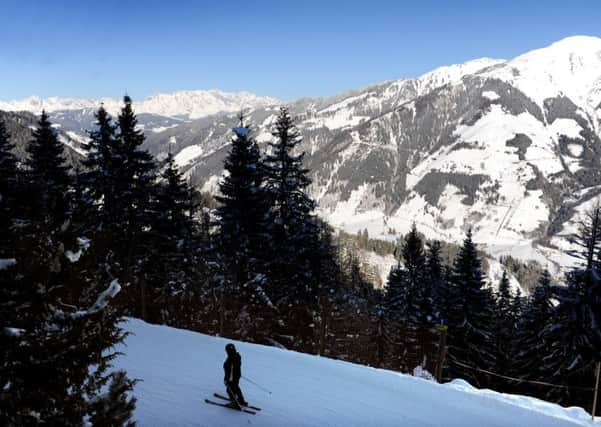Roger Cox: Does skiing on perfect snow offset a £6k fine?


About 18 months ago in this column I very tentatively suggested that, in certain extreme cases, it might – just might – be OK to indulge in a little clandestine lumberjackery in order to improve an existing ski run. The extreme case I had in mind was one of my favourite off-piste routes of all time, a glorious powder gulch in eastern Austria which, over a period of several years, had been first compromised and then all-but ruined by the appearance of a stand of fast-growing, closely-spaced pine trees sitting plumb in the middle of the fall-line. Would it really be such an eco-catastrophe, I wondered, if – say – five or six trees in the middle of this little cluster were to mysteriously disappear one summer, making it possible once again to hit the abundance of untouched cold-smoke pow sitting directly beneath them at something approaching the speed of joy?
At time of writing I still haven’t managed to talk myself into hiking up there with an axe in the off-season to perform the necessary tree surgery, but while I’ve been humming and hawing over the rights and wrongs of this relatively minor act of vandalism, it seems skiers in New Mexico have been indulging in illegal ski-forestry on a much larger scale.
Advertisement
Hide AdAdvertisement
Hide AdAccording to the US Department of Agriculture, following a tip-off from a hiker, it has emerged that several miles of trails have been illegally logged in New Mexico’s Santa Fe National Forest over the last few years. And according to Mike Gardiner, assistant special agent in charge of the US Forest Service (cool job title, no?), the way the trees have been felled suggests that they were probably cut to facilitate backcountry skiing. Between 300 and 400 trees have been chopped down in all, creating alleys between ten and 40 feet wide, and the trees have been left where they fell, so clearly this wasn’t a money-making exercise.
Obviously this sort of thing shouldn’t be condoned – despoiling pristine woodlands in order to create a private backcountry ski paradise for you and your buddies is in no way cool. Trees – as the lungs of the earth and our only real protection against the coming climate change apocalypse ever since the late 1980s, when our politicians collectively decided to stick their fingers in their ears and start singing “la-la-la-la-la” to block out the noise of the environmental lobby – should clearly take precedence over the cheap thrills of a few extreme sports nuts.
That said, what’s done is done, and now these trails exist, I for one would be curious to know where they might be. Purely for professional reasons, you understand. I could, y’know, hop over to New Mexico to write a report on the damage. It would probably make sense to go in winter so I could find out if people really were skiing there. And, of course, moving over steep terrain covered in deep snow would mean I’d have to take my split-snowboard along – just to make the ascents easier. If I ever happened to find myself standing at the top of a freshly-cleared 40 degree chute stuffed full of virgin snow, I would of course walk slowly and carefully down it out of respect for the trees that had lost their lives.
Apparently, if the people who cut these trails are ever caught they will face a maximum sentence of a $6,000 fine or six months in jail. Leaving aside for a moment the question of whether what they did was right (and I think we can all agree that chopping down trees in a National Park is very, very naughty) let’s consider whether, if they do get caught, $6,000 represents good value for money.
A season pass at a decent American ski resort these days can cost in the region of $1,000, but the skiers who cut these trails – assuming they were indeed skiers – don’t want to ski chopped-up pistes with hundreds of tourists. They’re looking for deep, untouched powder, which is an altogether more expensive commodity. Three or four days of cat skiing (that is, backcountry skiing using a snow-cat for uplift) will get you that, but can easily cost in excess of $1,000. So will heli-skiing in Alaska, but a week-long trip can cost up to $10,000. If the people who cut these trails own snowmobiles, which I suspect they probably do, then they’ll be able to ski almost as many vertical feet in a day as a cat or heli operation, so if they somehow get caught and have to cough up the $6,000? Well, assuming they manage to get a couple of weeks’ skiing in first they’ll still be quids in. Perhaps, then, the US Forest Service should start thinking about increasing fines for ski-related misdemeanours. Either that, or they should start charging people top dollar for skiing these new trails.